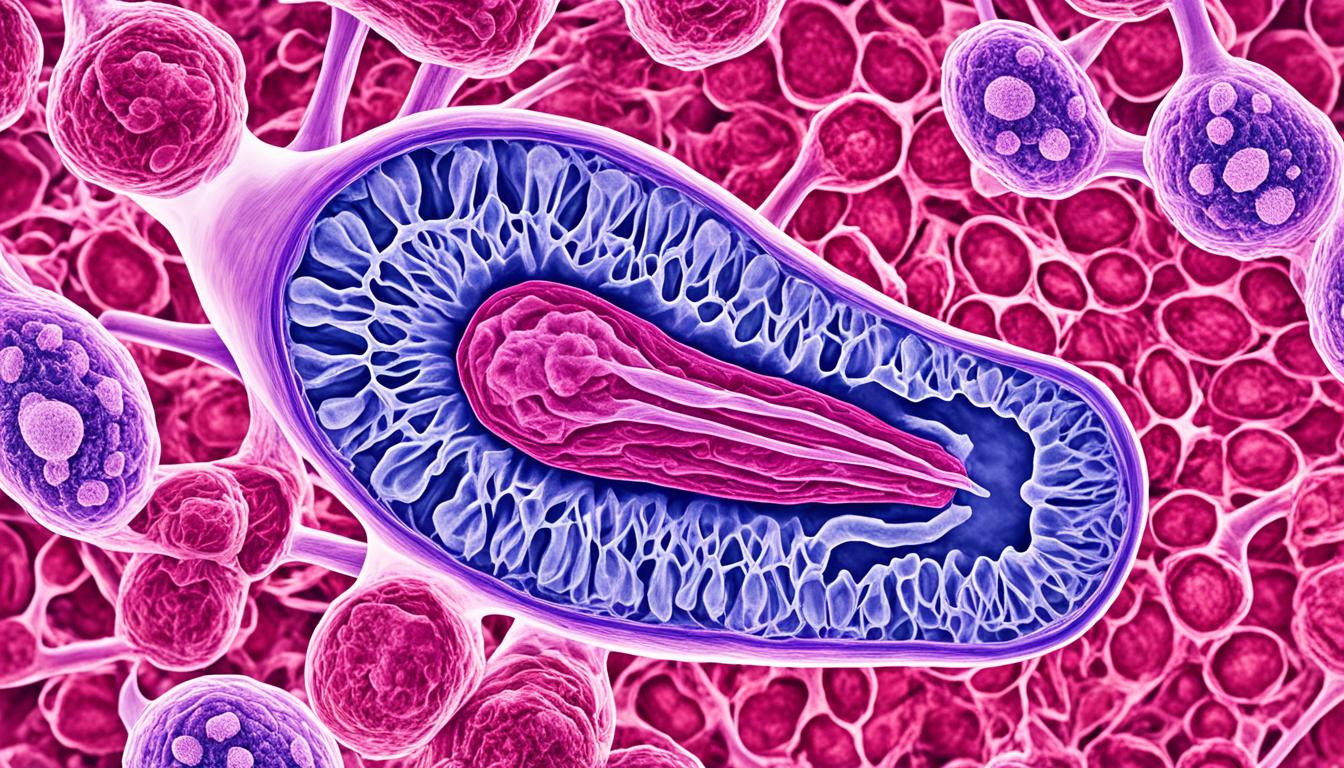Uterine fibroids are non-cancerous tumors that grow in the uterus. They are also called leiomyomas or myomas. These growths are pretty common. They can range from barely visible to as big as a grapefruit.
Many women with fibroids don’t notice them. But some may have heavy periods, pelvic pain, or a growing stomach area. There are a few reasons why some women develop fibroids. These include family history and certain lifestyle choices. For instance, Black women are more likely to have fibroids.
Doctors can find fibroids through different tests. These might include a pelvic exam, ultrasound, MRI, or hysteroscopy. Treatment can involve managing symptoms with medicine, surgery to remove them, or trying new methods like stem cell therapy.
Key Takeaways:
- Uterine fibroids are common benign tumors that grow in the uterus.
- They can vary in size and number, with some being as small as a grain of rice and others as large as a grapefruit.
- While many women may have fibroids without symptoms, others may experience heavy menstrual bleeding, pelvic pain, frequent urination, and constipation.
- Diagnosis can be done through a pelvic exam, ultrasound, MRI, or hysteroscopy.
- Treatment options include medications, surgical procedures, and innovative therapies like stem cell therapy.
Treatment Options for Uterine Fibroids
Uterine fibroids are not one-size-fits-all. The best treatment differs depending on the fibroids’ characteristics and the symptoms they cause. Here’s a look at some common treatment avenues:
1. Medications
For symptom control, doctors might offer medications. Pain meds can ease discomfort. Iron supplements help with anemia from heavy periods. Hormonal drugs like birth control or GnRH agonists regulate periods and reduce fibroid size.
2. Myomectomy
A myomectomy removes fibroids but keeps the uterus intact, great for those wanting to maintain fertility. It can be done using different methods, including via small incisions or a larger surgery.
3. Hysterectomy
Hysterectomy is the full removal of the uterus and is a final option for fibroid treatment. It’s chosen if a woman doesn’t want more children or has severe, untreatable symptoms.
4. Uterine Fibroid Embolization (UFE)
Uterine fibroid embolization is a non-surgical procedure. It blocks fibroids’ blood supply, causing them to shrink. This method has a quick recovery and avoids uterus removal.
5. Radiofrequency Ablation
Radiofrequency ablation uses microwaves to destroy fibroid tissue. It’s good for smaller fibroids and helps with symptoms. This method is considered innovative.
Discussing your options with a doctor is key. They will help tailor a treatment plan that meets your needs. The aim is to find relief, enhance quality of life, and achieve the best health results.
Medical advances mean there are now more ways to treat uterine fibroids. From simple medications to complex surgeries and cutting-edge techniques, there’s something for everyone.
Stem Cell Therapy for Uterine Fibroids
Stem cell therapy is new and promising for treating uterine fibroids. It’s part of regenerative medicine, which helps your body heal itself. Stem cells can turn into different types of cells and tissues. This makes them key in fixing problems with damaged or sick tissues.
This therapy is showing early signs that it might reduce or get rid of fibroids without surgery. So, if you want to keep your uterus and the option to have kids, this could be great news. More studies are happening to learn if stem cell therapy for fibroids is safe and really works.
Thanks to regenerative medicine and stem cell therapy, there’s new hope for those with fibroids. As we learn more, this therapy could change how we treat gynecological issues. It offers a surgery-free option for fibroids that may be very effective.

